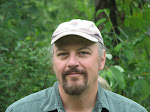I recently completed a somewhat grueling book tour for The Pats, a heavily illustrated (200
plus images selected by my collaborator Richard Johnson) but equally comprehensive
narrative history (150,000 words) that treats the history of a team and sport
as a real subject, rather than writing an extended valentine intended to pander
to sycophants. Over the course of about two weeks, I drove some 2,200 miles all
over New England, signed nearly 2,000 books in libraries, bookstores and
historical societies, did a couple dozen radio interviews and spoke before or
met hundreds and hundreds of readers. It
was exhausting – you have to be “on” far more than is comfortable, and soon
fall into the same patter at each appearance, even delivering the same laugh
lines. There were times, in between sleepovers at Comfort Inns and spare beds
in the homes of relatives and friends, that itallrantogether and I occasionally
lost track of where I was (Hello, Detroit!).
I am not complaining.
Book tours are sometimes a necessary part of the deal, one that has made
the book a regional bestseller behind Michelle Obama, currently wedged between
Lin-Manuel Miranda and Nathaniel Philbrick on the hardback nonfiction list.
Come Christmas morning, and the book is finally read, I’m reasonably confident
it will also enjoy some surprising success outside New England. But the real
takeaway, the one I can’t stop thinking about, was a total surprise.
Along the way I made guerilla stops at more than a dozen
Barnes and Nobles, offering to sign books, which each was eager to have me do. I
stop at the customer service desk, pull out my Sharpie, explain who I am, and, since
they’re doing me a favor, ask that they
steer me toward the stacks of my books so I can sign them in place so they don’t
have to lug them all over the store. I even offer to place the “signed copy”
sticker in the upper corner, telling them “I’m a full service writer.”
In one store in Rhode Island on a Saturday morning, as I
sat on the floor at the end of an aisle before a pile of some 40 books, I
noticed someone to my side. I turned and saw a young girl about age 10, long
brown hair and cute, black-framed, nerd girl glasses, staring at me furtively,
serious beyond her years. I smiled, said “Hello,” and explained what I was
doing. Then her father, standing nearby, said she wanted to ask me a
question. She looked panicked at first,
and looked at him as if to say “Noooo, Dad, don’t…” but I smiled and told her
to go ahead, she could ask me anything. I assumed she’d want to know if Tom Brady
was my favorite player (he’s not) or what Gronk is really like (I suspect he’s
well aware of how lucrative his shtick really is).
Wrong. She was
interested in me. I was something she’d never seen before, but dreamed of. I was an “author” with a book in a bookstore,
and it didn’t matter what it was about.
She set aside her shyness, looked down at me, her eyes
peeking out over the top of her glasses and asked a question I suspect has been
keeping her up at night and occupying her ten-year old dreams for quite some
time.
“How can I become an author?”
This is a question both easy to answer and hard to explain,
but I did my best, and for the next ten minutes we had an increasingly breezy
conversation as I first told her to ReadReadRead EverythingEverythingEverything, and she asked more
questions of me, and I of her, and I told her she reminded me of me, and soon I
was making her laugh, and she told me she had just finished the “million word reading
challenge” at her school, and I told her I hadn’t read that much at age ten,
that she was WAY ahead of me, and that even though this book is about sports, I
write about all sorts of other things, that I studied poetry in college, and
that I even have a book that looks like it will be made into a move (Young
Woman & the Sea, a biography of Trudy Ederle) and I even whispered
the name of the famous actress who will play her, and told her she had to
promise not to tell anyone because it was a big, big secret, which it is.
So by the end she wasn’t shy and was laughing and bubbly
and talking a mile a minute and her eyes were shining behind those nerd girl
glasses and then I could see it click: authors weren’t “other” people to her
anymore, faceless names on the spine of a book, as far away as Mars. They were
someone who, when they were ten years old, was a lot like her.
I wrote another book, sure, but sitting on the floor of
that bookstore, I’m pretty sure I helped make another writer.
And that makes it all worthwhile.
The Pats: An Illustrated History of the New England Patriots, Text by Glenn Stout with Illustrations curated by Richard Johnson, is available at booksellers everywhere, with signed copies at store all over New England.


